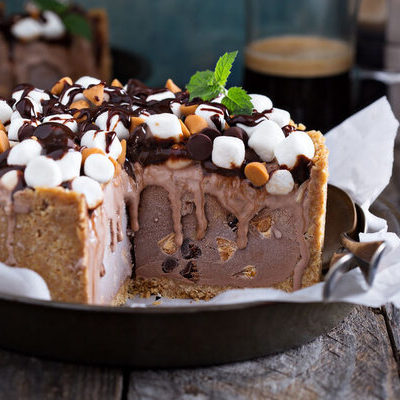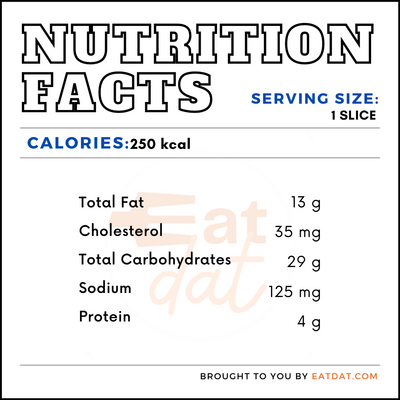
Ice Cream Cake
What is an Ice Cream Cake?
Ice cream cake is a dessert made by adding layers of ice cream into a cake. One of the most popular types is a three-layer cake which features one layer of ice cream sandwiched between two layers of cake. While conventionally baked cakes are often used for this dessert, no-bake cake layers are also common.
- This dessert is particularly popular for birthday celebrations or parties in the summertime when temperatures are high.
- Ice cream cakes are well-known in North America, as well as Australia.
The top 6 best brands in the US are:
- Carvel
- Baskin-Robbins
- Ben & Jerry’s
- Häagen-Dazs
- Friendly’s
- Dairy Queen
Origin of ice cream cake
These cakes are believed to have evolved from a cream dessert called trifle, which was popular during the Renaissance. During Victorian times, a dessert known as “bombes”, or ice cream treats that had been molded into shapes, also became popular. However, ice cream cakes didn’t take off until everyone had access to freezers sometime after World War I. After that, these cakes could be easily stored at home and enjoyed by more people. Today, you can find a wide variety of ice cream cakes at your local ice cream parlor or supermarket.
Nutrition
This cake is cool, sweet, and rich, making it a great treat for warm summer days. Nonetheless, its nutritional values make it a food that should be eaten sparingly. One slice of this cake can contain:

Although the protein and calcium in ice cream can provide some health benefits, it should be consumed in moderation due to their high levels of sugar. It’s recommended to limit your daily sugar intake to only 10% of your daily calories to help prevent obesity, type 2 diabetes, and heart disease.
Commercial Production
The commercial production may require a soft-serve ice cream machine, a large oven, a mixer, a food processor, and decorating equipment. Dairy Queen’s process uses no cake and instead begins with vanilla soft serve, a round frozen mold, and a round piece of cardboard. First, the mld is filled with ice cream before it has its edges smoothed and then more chocolate ice cream is added to the bottom. Next, several layers of chocolate fudge and chocolate flakes are added to create the layers of the cake. Finally, the cake is topped off with more vanilla soft serve, then left to freeze for two hours before it’s removed from its mold and packaged for sale.
Application
This cake is a delectable treat for all to enjoy but to ensure this cake is at its best, it should be stored properly. With these kinds of cakes, time is of the essence. Any leftovers of this cake should be quickly stored in airtight containers and placed in the freezer. The average home freezer can only store this cake safely for about seven days, after which it should be disposed of because it may develop freezer burn and become inedible. However, if the cake doesn’t have any eggs, cream cheese, whipped cream, or buttercream, it can stay in the freezer for up to two months as the layers won’t separate easily.
Ice cream cake recipes
This cool and creamy treat comes in an array of flavors. Here are some popular recipes to try:
- Oreo Ice Cream Cake
- Magnum Cake
- Birthday Ice Cream Cakes
- Ice Cream Cupcakes
- Chocolate Chip Cookie Ice Cream Cake
FDA Regulation
The Food & Drug Administration defines ice cream as a food produced by stirring and freezing dairy ingredients. To meet regulations, it must contain at least 1.6 pounds of solids to the gallon and must have at least 10 percent milk fat. The FDA also regulates ingredients commonly used in making cakes such as flour, egg, and sugar. Any sweet additives used in cakes are required to meet the ratio specifications outlined by the FDA. Furthermore, there are strict labeling regulations for cakes that also apply to ice cream cakes.
References
Olver, Lynne. “Ice Cream Cake.” Foodtimeline.org, The Food Timeline, www.foodtimeline.org/foodicecream.html.
“Celebrating With Ice Cream Cake.” Kalscoops.com, Kaleido Scoops, www.kalscoops.com/celebrating-with-ice-cream-cake/.
“Know Your Limit for Added Sugars.” Centers for Disease Control and Prevention, Centers for Disease Control and Prevention, 3 Apr. 2019, www.cdc.gov/nutrition/data-statistics/know-your-limit-for-added-sugars.html.
